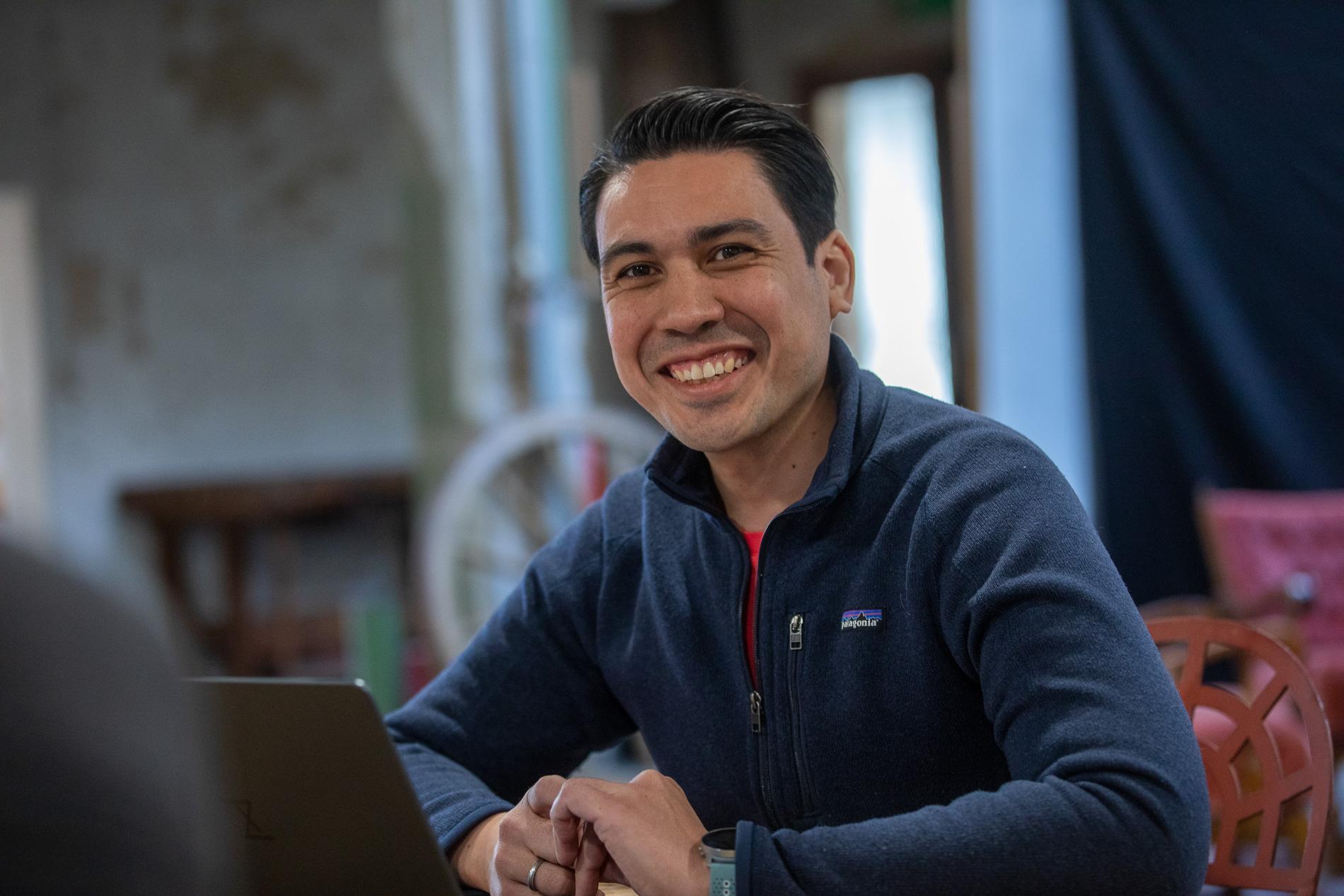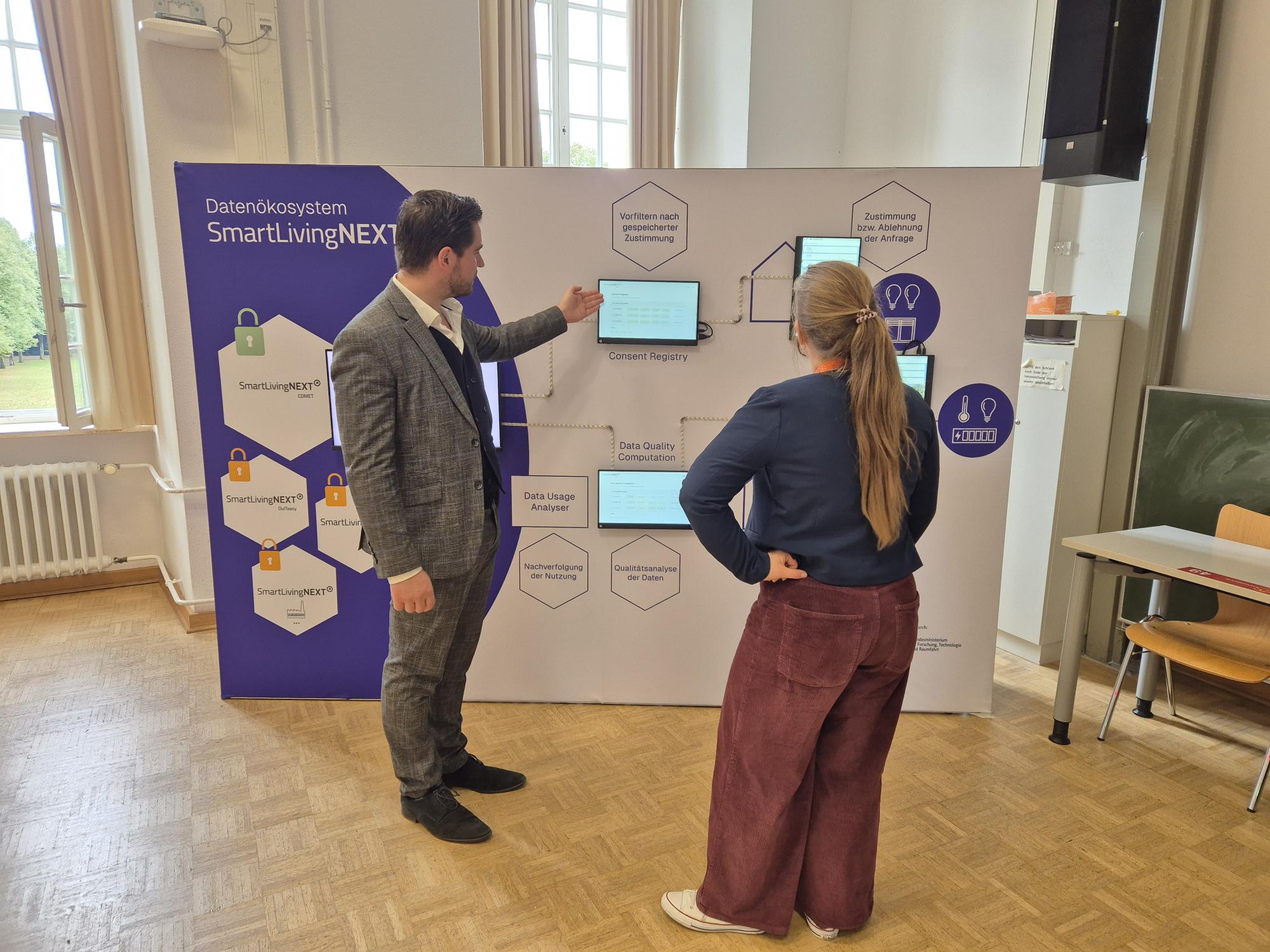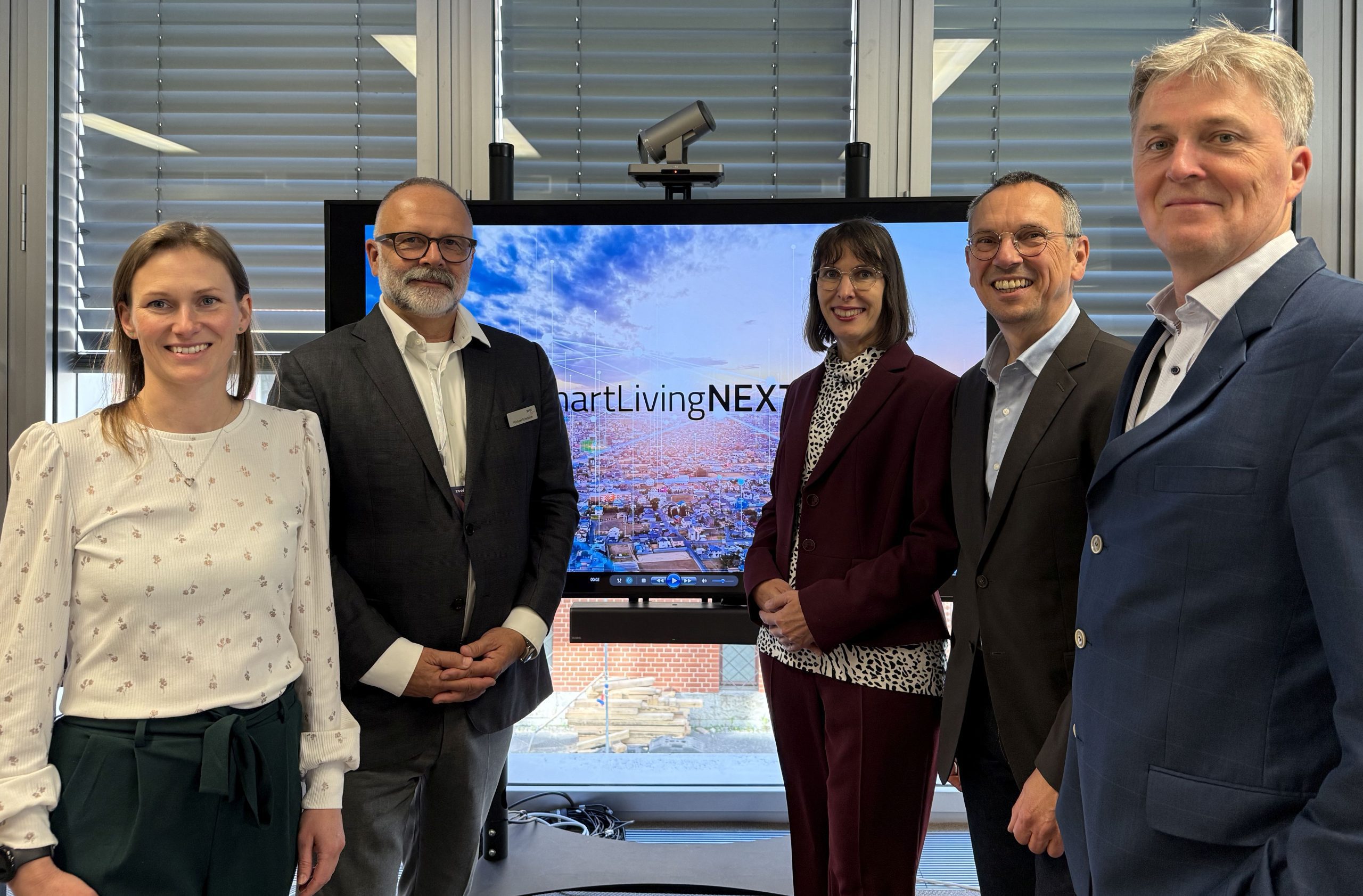“The digitalization of the real estate industry requires networked, interoperable systems.”
5. November 2025
10 minutes
With the aim of advancing decarbonization in the building sector, the start-up metiundo provides live data on energy and water consumption for property owners with complex building structures. In this interview, Dennis Nasrun, CEO & Co-Founder of metiundo, provides insights into the technological challenges of smart building solutions and explains why a comprehensively integrated data platform is the key to success and how the collaboration with SmartLivingNEXT is driving forward the digitalization of the real estate sector.

Mr. Nasrun, what was the trigger for founding metiundo?
After more than ten years in the energy industry, including as a consultant for smart meter rollouts in Germany, Austria and the UK, I came to the conclusion that there was a lack of a multi-divisional solution for the real estate industry that was conceived from the customer’s perspective, especially for complex building structures such as apartment buildings and commercial properties. After all, these make up a large part of the real estate industry. The existing systems were mostly tailored to single-family homes with very simple energy flows and did not cover electricity, gas, heat and water in an integrated manner. We wanted to change that. And so metiundo was born.
What is your long-term vision for the company, particularly with regard to the digitalization of the real estate sector?
Our long-term vision is to establish metiundo as an operating system for the new energy world in buildings. This is because the digitalization of the real estate industry, particularly in the context of the energy and heating transition and especially in existing buildings, requires networked, interoperable systems across all sectors instead of isolated individual solutions. New energy technologies offer enormous potential to reduce stranded asset risks in the real estate industry. At the same time, they enable significant cost reductions and additional sources of revenue. However, their implementation is often complex, especially in existing buildings where the structural conditions are complex.
In order to meet these challenges, a cross-application, easily integrated data infrastructure is needed that can be used universally and fully captures the entire energy flows of a building. This is the only way to efficiently scale new technologies and exploit their full potential. With our platform, we record all energy flows (electricity, heat, water and gas) and thus create the basis for a large number of further applications: From the digital integration of decentralized generators such as PV systems, heat pumps and battery storage systems to intelligent flexibility management, automated ancillary cost billing and ESG-compliant reporting.
What technical hurdles are you currently experiencing in the implementation of smart building solutions, for example with interfaces, data integration or scalability?
One of the biggest challenges at present is that many existing solutions are heavily focused on the electricity sector, while cross-sector integration, for example of gas, heat or water, is largely lacking. There is also often a lack of open interfaces (APIs), which makes it much more difficult to connect to third-party systems. Many systems are also based on fragmented, non-scalable technologies that cause high operating costs and are hardly suitable for complex building structures such as apartment buildings. In addition, this data often has to be aggregated and processed in virtual data models. Our answer to this is an open, scalable smart meter platform that integrates seamlessly into existing system landscapes and makes the data usable and refined across all sectors and applications as the basis for smart, future-proof building solutions.
Your company relies on modular, interoperable solutions. How important is system openness for your work and do you have an example of where interoperability is already working today?
It is absolutely central. Only through system openness and standardized interfaces can data be processed in a meaningful way and added value generated for all players. We deliberately rely on an easy-to-integrate, open API that also enables switching between solution providers without lock-in, for example to connect to billing systems, energy management solutions or ESG tools. For example, we are working with partners to test use cases for optimizing self-consumption that integrate storage systems, on-site PV power generation and wallboxes across buildings and different solution providers.
What technological impetus do you hope to gain from the collaboration with SmartLivingNEXT?
As an associated partner of SmartLivingNEXT, we would like to work with the other participants to show how the digital integration of new energy technologies can succeed in practice, in particular through a central interface for live consumption data. Standardized protocols such as EEBUS and interfaces such as CLS are key technological building blocks. By actively participating in pilot projects and working closely with the housing industry, we are creating the basis for new, scalable business models in areas such as energy sharing and networked districts.
To what extent can the live data from metiundo be integrated into a domain-specific data space such as that of SmartLivingNEXT?
The live data from metiundo on energy and water consumption can be easily integrated into a domain-specific data room such as SmartLivingNEXT. On the one hand, they enable a secure and controlled exchange of information between building operators, energy service providers and residents. Above all, however, they create the basis for seamlessly embedding our solution in a comprehensive, interoperable data ecosystem for the housing industry. This creates new, user-centered and cross-application use cases, above all the use of flexibility, but also cross-divisional use cases for billing and ESG reporting approaches. There are also use cases that are perhaps not even foreseeable today, particularly with regard to the development of local energy communities. Not only can processes be made more efficient and cost-effective, but the full potential of building data can also be exploited. Our live data forms the necessary basis without which these use cases cannot be implemented.
What specific applications do you see for the use of building data, for example to increase energy efficiency, for maintenance or for greater user comfort?
There is particularly great potential in the use of flexibility and intelligent energy and load management across building boundaries. If photovoltaic systems, charging stations, home storage systems and household devices are networked with each other and react in real time to environmental, consumption, grid and price signals, for example through time-variable tariffs or forecasting models, energy efficiency can be significantly increased. This lever is becoming increasingly important, especially in the context of current discussions about dynamic grid charges and energy sharing communities.
We also see great potential in differentiated energy optimization depending on the type of building, be it in the commercial, hotel and logistics sectors, in healthcare and municipal facilities or in the housing industry. New, data-based fields of application such as dynamic water tariffs also open up exciting prospects for greater efficiency and sustainability in building operation.
How are you using AI today and in which areas do you see further potential through SmartLivingNEXT?
We are currently analyzing the use of AI-supported tools and evaluating specific fields of application. In the context of SmartLivingNEXT, we see particular potential in AI-based solutions that work across sectors and continuously learn to control energy flows more intelligently and efficiently.
Finally, what is your vision for a networked, data-based home in 2030?
In 2030, we see a fully digitalized, networked and self-learning building world in which all consumption data (electricity, heat, gas and water) is intelligently exchanged, combined and specifically evaluated for optimisation measures. These data flows extend not only across individual buildings, but also across entire neighborhoods. Owners and tenants retain full control over their data and benefit noticeably: through lower energy and process costs, greater living comfort, increased property value and thus make an active contribution to climate protection. As a competitive metering point operator and metering service provider, we no longer see ourselves purely as a service provider for metering, but as a digital infrastructure service provider and thus as an enabler of a new, networked energy world in buildings.
And what else needs to happen in terms of technology or regulation before then?
The smart meter and control rollout in Germany must now pick up speed. We are confident that this will succeed, especially now that certified devices are available on the market and can be deployed quickly. The slow progress in Germany is often criticized and compared with other European countries, such as the UK or Italy, where the rollout is supposedly more advanced. But a closer look shows: The rollout in the UK has also taken many years. The technology used in Italy is old and also needs to be replaced. In addition, the devices used in other countries do not meet the technological requirements on the grid side that a digital, future-proof energy system based on volatile renewable energies will require. In addition, there is a need for greater standardization of interfaces and an acceleration of processes for the digitalization of grids. At a regulatory level, the promotion of energy sharing communities, the liberalization of all sectors including water and the introduction of dynamic grid charges are important steps.
Listen to the article (in German):
Editorial office:
Ilka
Klein
Category:
Flagship project




